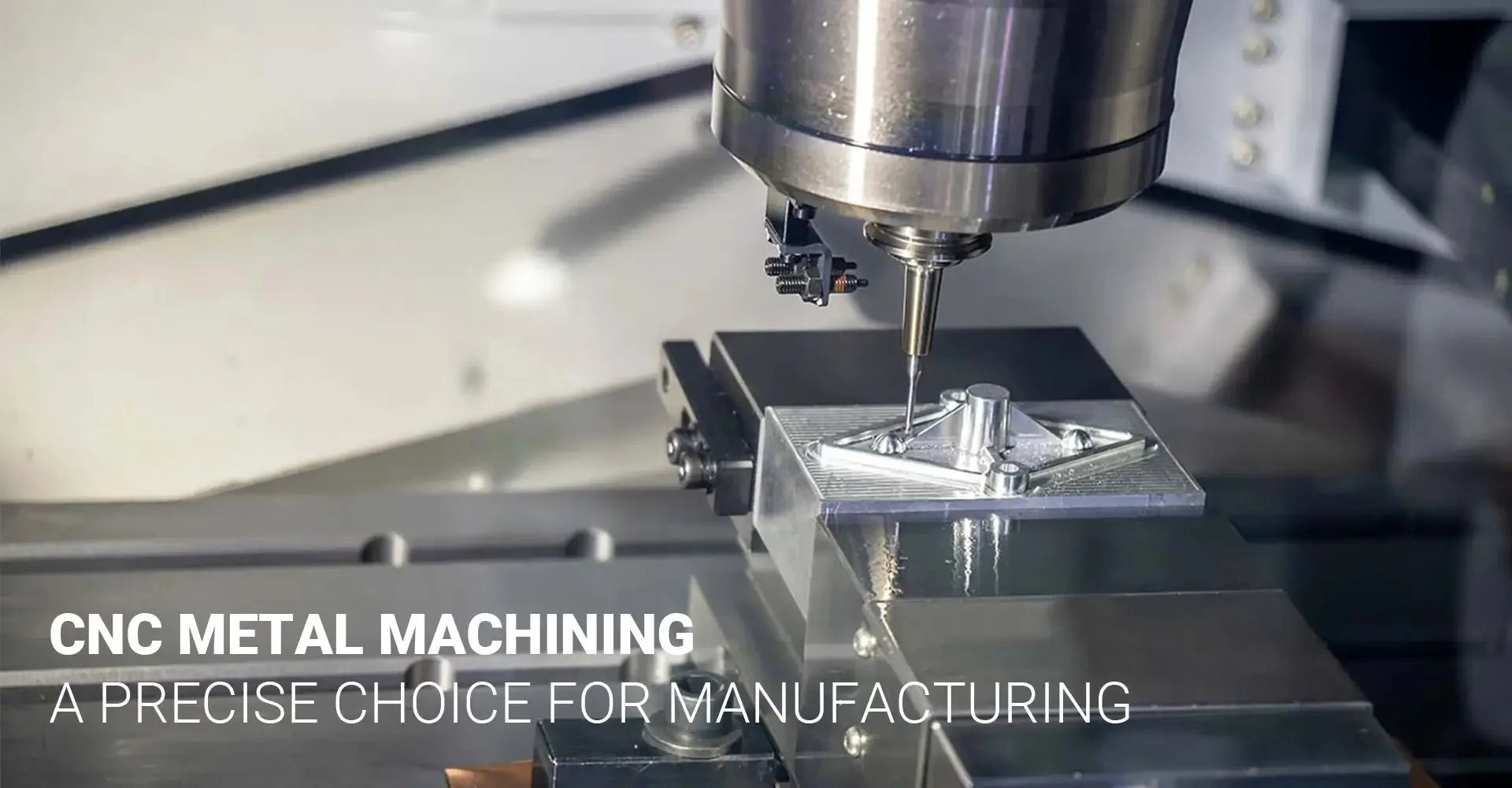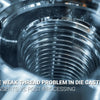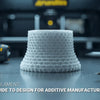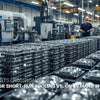What Makes CNC Metal Machining a Precise Choice for Manufacturing in 2025?

What Makes CNC Metal Machining a Precise Choice for Manufacturing in 2025?

In today's manufacturing landscape, precision and reliability are paramount. CNC metal machining stands at the forefront of modern manufacturing, offering unprecedented accuracy levels of ±0.001 inches. With a global market size of $105.8 billion and growing at a 7.2% CAGR, this technology continues to shape how we produce complex metal components.
The combination of computer-controlled precision and advanced tooling capabilities makes CNC machining services an optimal choice for businesses requiring high-quality metal parts. This comprehensive guide will walk you through everything you need to know about CNC metal machining in 2025.
Before diving deep into the specifics, let's explore how this technology delivers exceptional results for manufacturers worldwide.
Table of Contents
- How Does CNC Metal Machining Deliver ±0.001 Inch Precision?
- Which Metals Work Best for CNC Machining Projects?
- What Industries Rely on CNC Metal Machining Today?
- How Much Should You Budget for CNC Metal Machining?
How Does CNC Metal Machining Deliver ±0.001 Inch Precision?
The heart of CNC metal machining lies in its ability to achieve remarkable precision through computer-controlled operations. Modern CNC systems combine sophisticated software with precise mechanical movements to ensure exceptional accuracy in every cut.
The precision machining process follows a systematic approach:
- Design Phase
- CAD modeling with exact specifications
- Design validation and optimization
- Tolerance verification before production
- Programming Stage
- CAM software generates precise toolpaths
- Cutting parameters optimization
- Simulation testing to prevent errors
- Machine Setup
- Tool selection and calibration
- Workpiece fixture design
- Coolant system preparation

The precision comes from several key technological advantages:
- Computer-controlled movements that eliminate human error
- Advanced calibration systems that maintain accuracy
- Real-time monitoring and adjustment capabilities
- High-quality cutting tools and cooling systems
- Automated tool wear compensation
- Vibration dampening systems
Quality control measures ensure consistent precision:
- In-process measurement systems
- Regular machine calibration
- Temperature-controlled environments
- Tool wear monitoring
- Statistical process control
Which Metals Work Best for CNC Machining Projects?
When it comes to industrial machinery applications, selecting the right metal is crucial for project success. Different metals offer varying benefits in terms of strength, weight, and cost-effectiveness.
Industry data shows that aluminum dominates the market, accounting for 40% of CNC machining projects. However, each metal serves specific purposes based on application requirements.
Detailed analysis of common metals:
- Aluminum
- Grades: 6061, 7075, 5052
- Machinability rating: Excellent
- Cost efficiency: High
- Best applications:
- Aerospace components
- Prototype parts
- Consumer electronics
- Key advantages:
- Excellent strength-to-weight ratio
- Good thermal conductivity
- Superior corrosion resistance
- Stainless Steel
- Grades: 304, 316L, 410
- Machinability rating: Good
- Cost efficiency: Medium
- Best applications:
- Medical devices
- Food processing equipment
- Marine components
- Key advantages:
- High strength
- Excellent corrosion resistance
- Superior hygiene properties
- Titanium
- Grades: Grade 5 (Ti6Al4V), Grade 2
- Machinability rating: Challenging
- Cost efficiency: Low
- Best applications:
- Aerospace structures
- Medical implants
- High-performance parts
- Key advantages:
- Highest strength-to-weight ratio
- Excellent biocompatibility
- Superior heat resistance
- Brass
- Grades: C360, C377, C385
- Machinability rating: Excellent
- Cost efficiency: Medium
- Best applications:
- Electrical components
- Plumbing fixtures
- Decorative parts
- Key advantages:
- Good electrical conductivity
- Excellent formability
- Attractive appearance
What Industries Rely on CNC Metal Machining Today?
The versatility of CNC metal machining makes it invaluable across multiple sectors. The automotive industry stands as one of the largest beneficiaries, requiring precise components for modern vehicles.
Market analysis shows the following industry distribution:
- Aerospace: 35% market share
- Automotive: 28% market share
- Medical: 18% market share
- Other industries: 19% market share

Detailed industry applications:
- Aerospace Industry
- Critical components:
- Turbine blades
- Landing gear components
- Structural brackets
- Quality requirements:
- AS9100 certification
- Strict material traceability
- 100% inspection protocols
- Critical components:
- Automotive Sector
- Key applications:
- Engine components
- Transmission parts
- Brake systems
- Manufacturing demands:
- High-volume capability
- Just-in-time delivery
- Cost-effective solutions
- Key applications:
- Medical Industry
- Common products:
- Surgical instruments
- Implant components
- Medical device housings
- Special requirements:
- ISO 13485 compliance
- Biocompatible materials
- Clean room manufacturing
- Common products:
- Industrial Machinery
- Applications:
- Custom machine parts
- Robotics components
- Automation systems
- Key considerations:
- Durability requirements
- Maintenance accessibility
- Performance optimization
- Applications:
How Much Should You Budget for CNC Metal Machining?
Understanding the cost structure of CNC metal machining helps in project planning and budgeting. Several factors influence the final cost of your machined parts.
Comprehensive cost breakdown:
- Material Costs
- Base material pricing:
- Aluminum: $3-8/lb
- Stainless Steel: $5-15/lb
- Titanium: $25-50/lb
- Material waste factor: 20-30%
- Volume discounts available
- Base material pricing:
- Machine Time
- Hourly rates: $50-120/hour
- Setup time: $75-150/setup
- Programming time: $85-150/hour
- Factors affecting machine time:
- Part complexity
- Surface finish requirements
- Tolerance specifications
- Design Complexity Impact
- Simple parts: Base rate
- Moderate complexity: +15-20%
- High complexity: +25-35%
- Additional features:
- Tight tolerances: +10-20%
- Special finishes: +5-15%
- Additional operations: +15-25%
Cost optimization strategies:
- Design Optimization
- Simplify geometries where possible
- Optimize for standard tool sizes
- Consider design for manufacturability
- Material Selection
- Choose appropriate grade materials
- Optimize material usage
- Consider alternative materials
- Production Planning
- Optimize batch sizes
- Combine similar jobs
- Plan for repeat orders
- Quality Control
- Define necessary tolerances
- Specify required finishes
- Balance quality and cost
Conclusion
CNC metal machining continues to prove its value in modern manufacturing. With its ability to deliver precise results consistently, it remains a cornerstone technology for producing high-quality metal components. The combination of versatility, accuracy, and reliability makes it an excellent choice for diverse applications across industries.
As companies navigate their manufacturing needs in 2025, understanding these aspects of CNC metal machining helps make informed decisions about production methods and investments.
External Links for Further Reading:
[CNC Metal Machining](https://amfg.ai/2024/03/12/latest-developments-in-cnc-machining-february-2024/)[^1]
[Automotive CNC Machining](https://autoprotoway.com/cnc-machining-in-the-automotive-industry/)[^2]
[CNC Machining For Aerospace](https://sybridge.com/cnc-machining-aerospace-industry/)[^3]
---
[^1]: Explore the latest advancements to stay ahead in precision and efficiency in metal machining.
[^2]: Discover how CNC Machining is revolutionizing automotive manufacturing with precision and speed.
[^3]: Learn about the critical role of CNC Machining in aerospace for unmatched precision and reliability.
-
Posted in
CNC machining, CNC Metal





